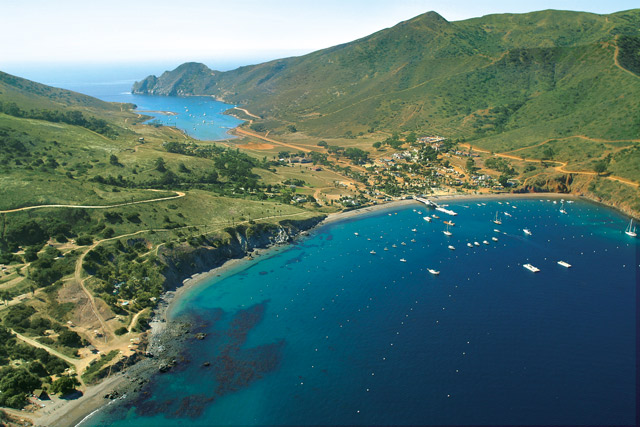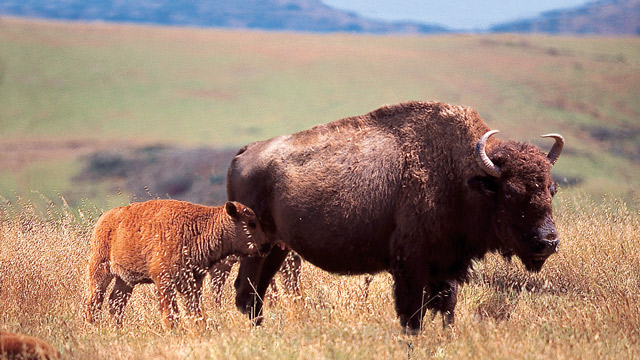A rocky outpost off the coast of Los Angeles, Santa Catalina Island was originally home to exactly zero bison. In 1924, however, when the island was owned by William Wrigley Jr. of chewing gum fame, a film crew imported 14 buffalo for a movie shoot. The crew left; the bison did not. The finished film, The Vanishing American, contains exactly zero scenes with bison.
As it goes, the drama happened offscreen. Fourteen bison multiplied to a peak of 600. They trampled; they stomped; they knocked over fences to keep out deer, another invasive species that thrived on the island. After Wrigley died, his heirs created in 1972 a conservancy to preserve the island’s natural habitat — which may have been a quixotic cause by then because, on top of buffalo and deer, the island was also overrun with goats and pigs.
But bison were the thousand-pound problem on the island. Culls that sent the bison to livestock auctions were stopped after a public outcry. The conservancy began sending some animals to Native American reservations, but the transfer was costing as much as $US100,000 per year. In 2009, they tried a new strategy, one that was a lot easier than forced buffalo relocation.
“You get close enough, and then you just pop her in the butt,” Carlos de la Rosa of Catalina Island Conservancy told the Wall Street Journal. De la Rosa was describing a birth control vaccine called PZP, or porcine zona pellucida. Made of a glycoprotein derived from pigs’ eggs, PZP stimulates the immune system to create molecules that latch onto the bison’s own eggs to prevent fertilization. Female bison were rounded up and injected for the initial vaccines, but subsequent doses were delivered via long-range dart gun.
According to a recently published study in the Journal of Zoo and Wildlife Medicine, the PZP has been working great. Last year, just one baby bison was born, appropriately named “Uno.” The vaccine even wears off after a couple years and seems to have no ill effects. Catalina’s conservancy plans to keep up the birth control experiment, maintaining the herd at around 150 to 200 animals.
PZP has been used elsewhere in the wild, too, notably to manage elephant herds in a South African national park and wild horses in the American west. In each of these cases, human intervention had turned the animals loose, allowing them to thrive where they otherwise wouldn’t. Only more human intervention can keep them from running wild.

A view of the harbor in Santa Catalina Island
In Santa Catalina Island, the humans need the bison, too. Despite being far from a natural presence there, the animals are a major draw for tourists. The charisma of these bison is why simply killing them won’t fly — even if it means the surviving ones would no longer starve — as well as why getting rid of them all is certainly not in the conservancy’s best interest.
The conservancy did, however, kill the goats and pigs that also once ran roughshod over the island. Deer remain a problem because their hunting is capped by the state’s Department of Fish and Game. When the bison birth control program began in 2009, the WSJ interviewed one island resident who opposed the conservancy’s efforts to return Catalina to nature — or its idea of nature. “You had something special,” he told the paper. Without all these animals, natural or not, he said, the island would be like any other place in Southern California. [Wall Street Journal–KCET]
Photos courtesy of Catalina Chamber of Commerce
